
Bosnian War (1992-1995): Intelligence/Clinton Administration
$19.50
Bosnian War (1992-1995): Intelligence/Clinton Administration
Description
Bosnian War & Dayton Agreement: A Timeline and Key Figures
Timeline of Main Events (1991-1995)
- October 1991: Bosnia and Herzegovina declares sovereignty from the former Yugoslavia.
- 3 March 1992: Bosnia and Herzegovina declares independence from the former Yugoslavia following a referendum boycotted by ethnic Serbs.
- March 1992 onwards: Bosnian Serbs, supported by Serbia and Montenegro, initiate armed resistance. Their aim is to partition Bosnia and Herzegovina along ethnic lines and join Serb-held areas to form a “Greater Serbia.” This marks the beginning of the Bosnian War.
- 1992-1995: The Bosnian War becomes the worst armed conflict in Europe since World War II, characterized by intense interethnic civil strife, including instances of “ethnic cleansing” and rape used as a tool of war.
- June 12, 1992: The CIA establishes the Interagency Balkan Task Force (BTF) to streamline intelligence for decision-makers regarding the unfolding crisis.
- January 22, 1993: President Clinton issues Presidential Review Directive (PRD) 1, the first PRD of his administration. Its objective is to develop broad strategic goals and strategies for US policy toward the former Yugoslavia.
- February 19, 1993: A memo from Anthony Lake to President Clinton discusses a presidential decision on humanitarian air drops for Bosnia.
- April 2, 1993: A CIA Directorate of Intelligence Memorandum details “Rape as an Instrument of Ethnic Cleansing” in Bosnia-Herzegovina.
- August 25, 1993: A memo from Anthony Lake to President Clinton outlines a “Bosnian End Game Strategy.”
- March 1994: Bosniaks and Croats sign an agreement, reducing the number of warring factions in Bosnia from three to two and creating the joint Bosniak/Croat Federation of Bosnia and Herzegovina.
- January 26, 1994: A BTF Assessment analyzes “Some Implications of an UNPROFOR Withdrawal from Bosnia.”
- April 1994: BTF Assessments and CIA memos focus on the “Bosnian Serb Air Defense Threat in Gorazde Area” and preparations for Principals Committee meetings on Bosnia.
- April 29, 1994: A CIA Directorate of Intelligence Memorandum addresses “Ethnic Cleansing in Bosnia-Herzegovina.”
- November 1994: BTF Assessments examine the implications of the situation in Bihac and the “Milosevic-Karadzic Break” and its potential stalemate.
- November 27, 1994: A memo from Anthony Lake to President Clinton discusses “Bosnia Policy after the fall of Bihac.”
- December 13, 1994: A memo from Anthony Lake to President Clinton concerns a “Principals Review of Bosnia Policy.”
- May – December 1995: The focus of a State Department “Dayton History Project” study, covering the period from the end of a cease-fire to the signing of the Dayton Agreement.
- June-July 1995: The “Summer Crisis” in Bosnia, a key period leading up to the Dayton negotiations.
- Mid-August – October 1995: US shuttle diplomacy and agreement on broad principles for a peace settlement. This period includes “Tragedy as Turning Point” (likely referring to significant events like the Srebrenica massacre), “Operation Deliberate Force” (NATO bombing), and efforts to negotiate a cease-fire.
- October 6, 1995: A BTF Assessment reports on “Mass Graves in the Former Yugoslavia.”
- November 1-21, 1995: Proximity talks are held in Dayton, Ohio.
- November 2, 1995: A memo from Don Kerrick to Anthony Lake provides a “Dayton SITREP #1.”
- November 17, 1995: A memo from Don Kerrick to Anthony Lake provides a “Dayton SITREP #12.”
- November 21, 1995: The warring parties initial a peace agreement in Dayton, Ohio, bringing a halt to three years of interethnic civil strife. The agreement retains Bosnia and Herzegovina’s international boundaries and establishes a multi-ethnic and democratic government.
- December 2, 1995: Radovan Karadzic sends a letter to President Clinton accepting the Dayton Agreement.
- December 14, 1995: The final peace agreement is signed in Paris.
- Spring 1996: Secretary of State Warren Christopher directs the State Department to undertake an internal study of the US role in achieving peace in Bosnia, leading to the “Dayton History Project” report (published in May 1997).
- October 1, 2013: The CIA releases a significant collection of previously classified documents related to the Bosnian War and the Clinton Administration’s policy, including PRD 1 and numerous intelligence assessments.
Cast of Characters with Brief Bios
- William J. Clinton: The President of the United States during the Bosnian War (1992-1995). His administration’s policy decisions and efforts to broker peace are central to the documents.
- Warren Christopher: United States Secretary of State during part of the Bosnian War and the Dayton peace process. He directed the State Department to undertake the “Dayton History Project.”
- Madeleine Albright: United States Ambassador to the United Nations during the early part of the Clinton administration and later Secretary of State. She was a key participant in discussions and decisions regarding the Bosnian War.
- Richard Holbrooke: A leading American diplomat who played a crucial role in negotiating the Dayton Peace Accords. He conducted shuttle diplomacy and led the US negotiating team at Dayton.
- Strobe Talbott: United States Deputy Secretary of State during the Clinton administration. He was involved in shaping and executing US foreign policy towards the Balkans.
- Anthony Lake: United States National Security Advisor during the Clinton administration. He played a key role in advising the President on foreign policy matters, including the Bosnian War, as evidenced by his numerous memos.
- Robert Owen: Likely an official involved in the Dayton peace process, as he is mentioned as one of the key American participants interviewed for the Dayton History Project. Further details are not provided in the source.
- Christopher Hill: Likely an official involved in the Dayton peace process, as he is mentioned as one of the key American participants interviewed for the Dayton History Project. Further details are not provided in the source.
- Peter Tarnoff: Likely a high-ranking official in the State Department during the Clinton administration, involved in foreign policy discussions related to the Balkans, as he is mentioned as a participant in the Dayton History Project interviews.
- Radovan Karadzic: The Bosnian Serb political leader during the war. He was indicted by the International Criminal Tribunal for the former Yugoslavia (ICTY) for genocide, war crimes, and crimes against humanity. His letter to President Clinton indicates his eventual acceptance of the Dayton Agreement.
- Slobodan Milošević: The President of Serbia during the Bosnian War. He supported the Bosnian Serbs and played a significant role in the conflicts in the former Yugoslavia. He was also indicted by the ICTY. While not directly interviewed in the Dayton History Project transcripts mentioned, his actions and policies were central to the conflict and the peace process.
- Bennett Freeman: State Department Deputy Assistant Secretary for Public Affairs, who directed the Dayton History Project.
- William Burns: Executive Secretary of the Department of State, who sponsored the Dayton History Project.
- Thomas Donilon: Assistant Secretary for Public Affairs, who sponsored the Dayton History Project.
- John Kornblum: Assistant Secretary for European and Canadian Affairs, who sponsored the Dayton History Project.
- Don Kerrick: Likely an official involved in providing situation reports (“SITREPs”) from the Dayton negotiations to Anthony Lake, suggesting a role in the National Security Council or a related agency.
Bosnian War (1992-1995): Intelligence/Clinton Administration: CIA, State, DOD, & White House Files
2,346 pages of CIA, State Department, DOD, National Security Council and White House files concerning the Bosnian War, CIA Intelligence, Clinton Administration’s policy decisions, and the Dayton Peace Accords.
This collection includes many documents that were not released by the CIA until October 1, 2013.
The documents date from 1990 to 1997. The focus of this collection of files is a set of documents which reveal the role of the intelligence services in informing the Clinton Administration about the war in the Balkans. The release of these documents by the CIA sheds light on the supporting role intelligence played in the Clinton Administration’s policy decisions during the 1992-1995 Bosnian War, the worst armed conflict in Europe since World War II. Many of the files document the role of intelligence in ending armed conflict and the challenges of sharing intelligence.
The collection highlights the accomplishments of the Director of Central Intelligence Interagency Balkan Task Force in streamlining intelligence for decision makers through a groundbreaking level of collaboration among federal agencies.
This collection of 343 declassified documents highlights the accomplishments of the Clinton Administration in brokering the 1995 Dayton Peace Accords, which resolved the 1992-1995 Bosnian War, and the role the Director of Central Intelligence Interagency Balkan Task Force (BTF) played in informing policymakers’ decisions. The compilation contains Statements of Conclusions from National Security Council meetings where senior officials made decisions on the Bosnian conflict, BTF memoranda pertaining to those meetings, key intelligence assessments, finished intelligence reports, memoranda, background studies, and conference reports.
It should be noted that may of documents were declassified by the CIA’s Historical Review Program less than 17 years after their creation. For the CIA this is a much more accelerated track for the declassification and release of secret documents. These are the youngest documents ever released by the Historical Collections Division of the CIA’s Information Management Services.
The collection also includes White House memorandums, State Department and Department of Defense communications and selected materials from the William J. Clinton Presidential Library. The records center around 1995, the year in which the Dayton Accords were signed.
Bosnia and Herzegovina’s declaration of sovereignty in October 1991 was followed by a declaration of independence from the former Yugoslavia on 3 March 1992 after a referendum boycotted by ethnic Serbs. The Bosnian Serbs, supported by neighboring Serbia and Montenegro, responded with armed resistance aimed at partitioning the republic along ethnic lines and joining Serb-held areas to form a “Greater Serbia.” In March 1994, Bosniaks and Croats reduced the number of warring factions from three to two by signing an agreement creating a joint Bosniak/Croat Federation of Bosnia and Herzegovina. On 21 November 1995, in Dayton, Ohio, the warring parties initialed a peace agreement that brought to a halt three years of interethnic civil strife. The final agreement was signed in Paris on 14 December 1995. The Dayton Peace Accords retained Bosnia and Herzegovina’s international boundaries and created a multi-ethnic and democratic government charged with conducting foreign, diplomatic, and fiscal policy.
Highlights among the documents.
This collection includes the Presidential Review Directive (PRD) 1 which was not declassified and released by the CIA until October 1, 2013. It was created on January 22, 1993, the very first PRD of the Clinton Administration. The PRD series was the mechanism used by the Clinton Administration to direct specific reviews and analyses to be undertaken by the Executive Branch’s departments and agencies. The objective of this PRD was to foster the development of broad strategic goals and strategies to guide Administration policy toward the former Yugoslavia.
Six months after the signing of peace accords the State Department’s Dayton History Project interviewed several key American participants in the peace talks. This collection includes the transcripts of the oral histories given by Warren Christopher, Madeleine Albright, Richard Holbrooke, Strobe Talbott, Robert Owen, Christopher Hill, and Peter Tarnoff.
The titles of some of the most important documents not previously released before October 2013 include:
1991-12-19 CIA Directorate of Intelligence Memorandum Bosnia-Herzegovina on the Edge of the Abyss
1992-06-12 CIA Memo Establishing the Interagency Balkan Task Force
1993-01-22 Presidential Review Directive 1 US Policy Regarding the Situation in the Former Yugoslavia, January 22, 1993
1993-02-19 Memo, Anthony Lake to President Clinton, SUBJ Presidential Decision on Humanitarian Air Drops for Bosnia
1993-04-02 CIA Directorate of Intelligence Memorandum, Rape as an Instrument of Ethnic Cleansing
1993-08-25 Memo, Anthony Lake to President Clinton, SUBJ Bosnian End Game Strategy, August 25, 1993
1994-01-26 BTF Assessment Some Implications of an UNPROFOR Withdrawal from Bosnia, January 26, 1994
1994-04-16 BTF Assessment Bosnian Serb Air Defense Threat in Gorazde Area
1994-04-18 CIA Pre-Meeting Memo on 18 Apr 1994 Principals Committee Meeting on Bosnia
1994-04-29 CIA Directorate of Intelligence Memorandum Ethnic Cleansing in Bosnia-Herzegovina
1994-11-15 BTF Assessment Bihac Implications for the worst case scenario
1994-11-23 BTF Assessment The Milosevic-Karadzic Break Stalemated for Now, November 23, 1994
1994-11-27 Memo, Anthony Lake to President Clinton, SUBJ Bosnia Policy after the fall of Bihac, November 27, 1994
1994-12-13 Memo, Anthony Lake to President Clinton, SUBJ Principals Review of Bosnia Policy, December 13, 1994
1995-07-25 NSC Discussion Paper, Schematic of Endgame Strategy
1995-10-06 BTF Assessment Mass Graves in the Former Yugoslavia
1995-11-02 Memo, Don Kerrick to Anthony Lake, SUBJ Dayton SITREP #1; November 2, 1995 9:00 pm
1995-11-17 Memo, Don Kerrick to Anthony Lake, SUBJ Dayton SITREP#12; November 17, 1995 11:10 am
1995-12-02 Letter, Karadzic to President Clinton Accepting the Dayton Agreement
State Department Official History of Dayton Peace Process
This collection also includes:
The Road to Dayton – U.S. Diplomacy and the Bosnia Peace Process, May -December 1995 U.S. Department of State, Dayton History Project, (May 1997)
In the spring of 1996, Secretary of State Warren Christopher directed the Department of State to undertake an internal study of America’s successful effort to bring peace to Bosnia. The study would be limited to the period from May through early December 1995, from the end of the cease-fire in Bosnia to the signing of the Dayton Agreement in Paris. It would focus on three periods in particular: the formulation of a new U.S. diplomatic initiative between May and early August; the conduct of shuttle diplomacy and agreement on broad principles for a peace settlement between mid-August and October; and the actual proximity talks at Dayton in November.
The State Department’s stated goal of what became the Dayton History Project were twofold: to write a classified history based both on classified documents and numerous interviews with key participants while their recollections remained detailed and fresh; and to create a comprehensive archive of these materials. The Project was sponsored by the Executive Secretary of the Department William Burns; the Assistant Secretary for Public Affairs, Thomas Donilon; and the Assistant Secretary for European and Canadian Affairs, John Kornblum. It was directed by Bennett Freeman, State Department Deputy Assistant Secretary-Public Affairs.
The 278 page report contains the chapters: Chapter 1 – The Summer Crisis: June-July 1995, Chapter 2 – Through the Window of Opportunity: The Endgame Strategy, Chapter 3 – Tragedy as Turning Point: The First Shuttle, Mt. Igman, and Operation Deliberate Force, Chapter 4 – The Road to Geneva: The Patriarch Letter and NATO Bombing, Chapter 5 – Force and Diplomacy: NATO Bombing Ends, The Western Offensive Heats Up, Chapter 6 – The New York Agreement, Negotiating a Cease-fire, and Approaching a Settlement, Chapter 7 – Preparing for Proximity Talks, Chapter 8 – Opening Talks and Clearing Away the Underbrush: Dayton, November 1-10, Chapter 9 – Endgame: Dayton, November 11-21.
1991-12-19 CIA Directorate of Intelligence Memorandum Bosnia-Herzegovina on the Edge of the Abyss

1993-01-22 Presidential Review Directive 1 US Policy Regarding the Situation in the Former Yugoslavia, January 22,1993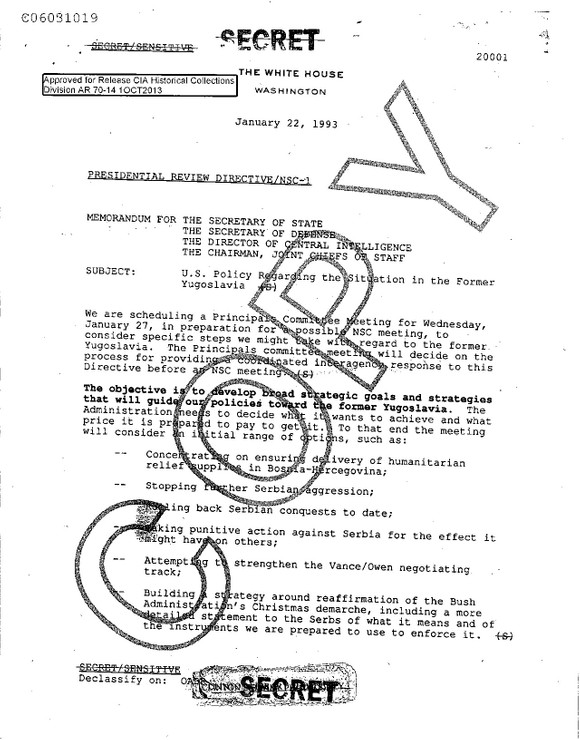
1993-04-02 CIA Directorate of Intelligence Memorandum, Rape as an Instrument of Ethnic Cleansing

1993-08-25 Memo, Anthony Lake to President Clinton, SUBJ Bosnian End Game Strategy, August 25, 1993

1995-10-06 BTF Assessment Mass Graves in the Former Yugoslavia
 1
1
995-12-02 Letter, Karadzic to President Clinton Accepting the Dayton Agreement
Related products
-
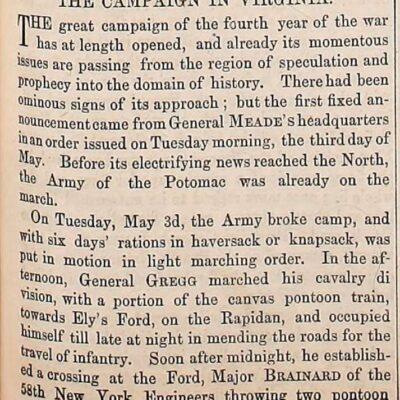
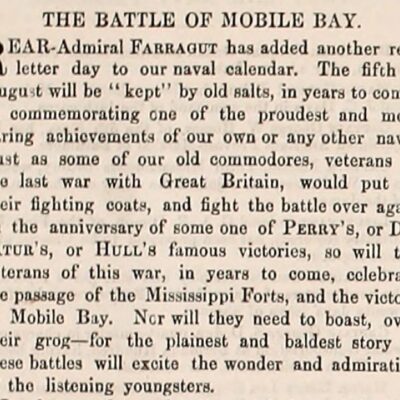
Civil War: Army Navy Journal & Gazette Volume 1 (1863 – 1864)
$19.50 Add to Cart -
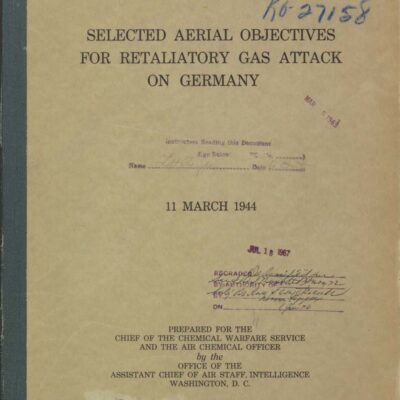
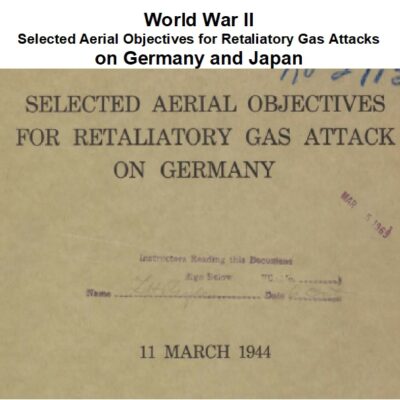
World War II: Targeted Aerial Objectives for Retaliatory Gas Attacks on Germany and Japan
$3.94 Add to Cart -
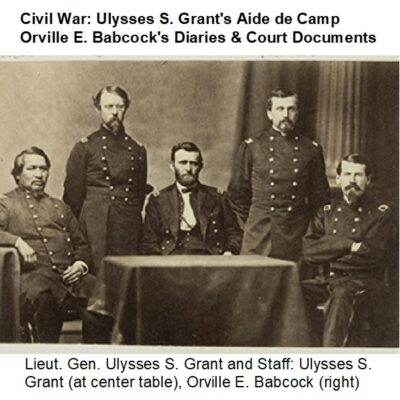
Civil War Ulysses S. Grant’s Aide de Camp Orville E. Babcock’s Diaries & Court Documents
$3.94 Add to Cart -
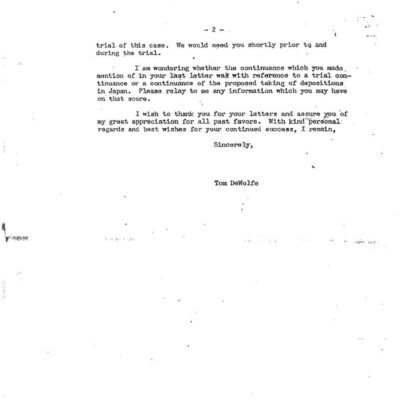
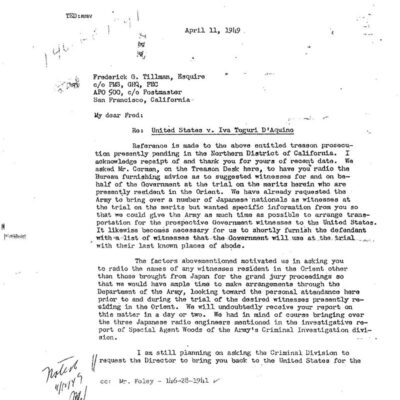
Tokyo Rose: Department of Justice Prosecution Files
$19.50 Add to Cart